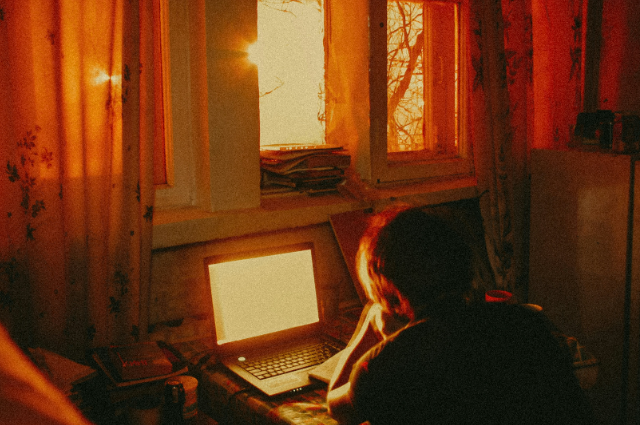
In a world that measures worth in faster decisions, quicker replies, instant results, and instant success, slowing down feels like an act of rebellion. We rush through tasks, skim information, and call it efficiency. But in this constant push for output, something subtle yet essential slips away: our ability to think deeply, feel richly, and create freely. What if the true secret to creativity isn’t speeding up, but rather slowing down?
The Mind That Thinks Better When It Rests
Our brains aren't machines built for nonstop output; they are living, breathing systems that need rhythm: periods of focus followed by periods of rest. Have you noticed that when we slow down and let our minds wander, something remarkable happens behind the scenes: the brain's creative circuitry-often called its "default mode"-begins to hum quietly, linking up distant thoughts, memories, and emotions in ways we don't consciously control.
That is why our best ideas often appear when we are not trying to be creative on a walk, in the shower, or staring absent-mindedly out of the window. The moment we stop forcing focus, the subconscious starts doing its quiet, brilliant work. It's not magic; it's biology.
This gentle drifting of thought allows the mind to breathe, to stretch,
Stillness creates a place for discovery
In a world where noise is an addiction, stillness feels uncomfortable. But for creativity, it's oxygen,
Think of how silence sharpens your hearing in a quiet forest. The same thing happens inside the mind. When we pause long enough, subtle ideas-the ones drowned out by constant stimulation-begin to surface.
Boredom, that state we’ve been taught to avoid, often holds the seed of invention. It’s in the quiet spaces, when there’s nothing to distract us, that imagination starts to play. Artists and thinkers throughout history have known this intuitively. Beethoven’s long, solitary walks through Vienna’s woods weren’t idleness; they were part of his process. They weren’t rushing to create; they were listening for ideas to emerge.
In truth, creativity rarely blooms in chaos. It grows in the calm that follows. Which we all lack
The Modern Myth of Constant Motion
Today, people often confuse speed with progress. We check our phones countless times a day. We switch between tasks and feel proud of our multitasking skills. However, our minds aren’t designed for this kind of activity. When we divide our attention constantly, our thoughts remain shallow. We skim through information without fully engaging.
Creativity, on the other hand, thrives in deeper thought. A calm, unhurried mind can make connections that an anxious mind cannot. Slowing down reduces stress, sharpens focus, and opens up new perspectives. A calm mind is not empty; it is full of potential. This is why some of our best ideas appear in unexpected moments – while jogging, driving, or cooking dinner. These relaxed times allow our brains to wander freely, letting insights arrive gently and unexpectedly.
The Art of Doing Things Slowly
Slowing down isn't about doing less; it is about doing things with intention. It is choosing depth over distraction. Write by hand instead of typing sometimes. The deliberate motion of pen on paper slows your thoughts just enough to catch what you might otherwise miss. Take unhurried walks without headphones. Notice the pattern of light, the hum of distant traffic, the rhythm of your breath. These small acts of awareness train the mind to stay open, and an open mind is a creative one.
Even in work, a pause can be powerful. Take a few minutes at the end of the day to consider silently what worked and didn’t work often brings sharper insights the following morning. Creativity doesn’t reward those in rush mode; rather, it rewards people present enough to notice what others overlook.
Creativity as a way
Slowing down isn't actually slowing you down; it's something that lets you return to yourself. When we stop rushing, the world regains its texture. We notice the scent of rain, the tone in someone's voice, and the delicate way a thought unfolds when it has time. This awareness is where real creativity exists; it is found in attentive being rather than endless doing.
The modern world treats imagination like a resource to mine. We think we can schedule, optimize, and measure it. But creativity is not a race; it is a rhythm. It invites us to move at the pace of noticing, feeling, and reflecting. The beauty of rhythm is that it includes both motion and pause. There is no music born without silence same goes for art., too
So the next time you feel stuck or uninspired, don’t rush to fill the silence. Take a moment to notice what’s around you, the small details, the way your breath steadies when you pause long enough to feel it. Creativity isn’t about moving faster; it’s about noticing what’s already there. And sometimes, to notice, we just need to slow down.
Slowing down isn’t losing momentum; it’s reconnecting with yourself, with your thoughts, and with the quiet ideas waiting to surface once the noise fades.
References:
- How slowing down can actually boost creativity and productivity - By Marie Gagne.
- The Power of Slow Productivity: Slowing Down to Achieve More - Anna Lodwick
